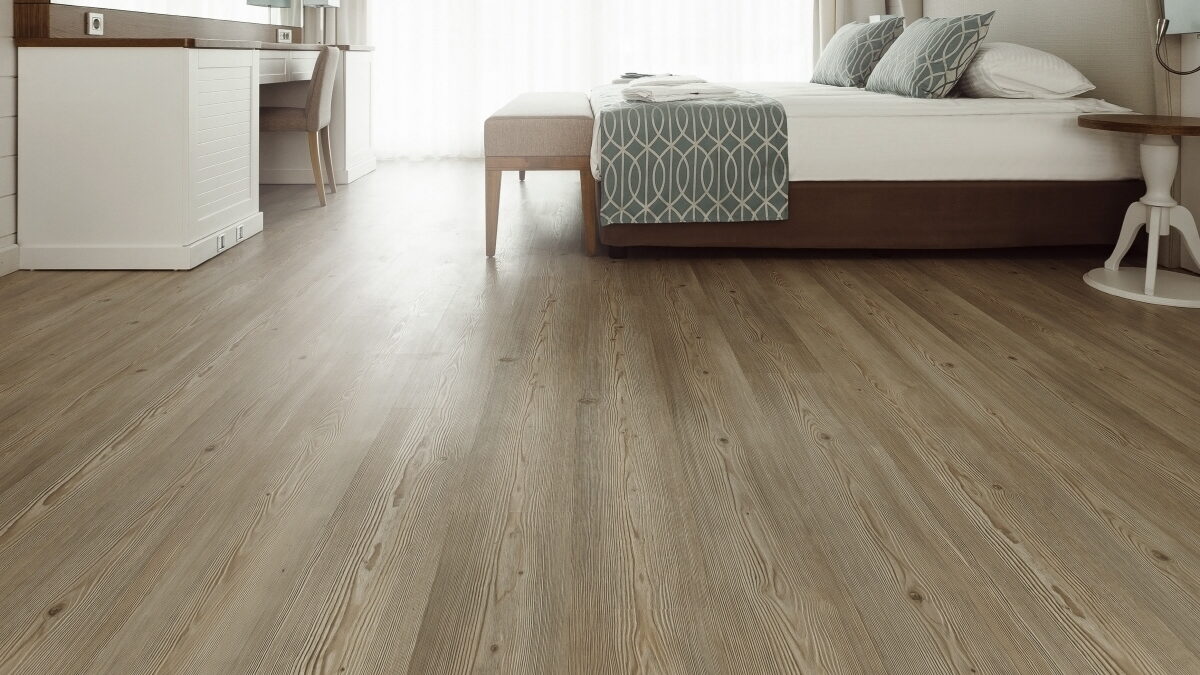If you’re planning to install vinyl flooring for your next home renovation project, you’ll have to determine the best thickness for your materials. The thickness of your floors can impact its durability, maintenance level, comfort, soundproofing, and more. And while thicker vinyl floors do offer many benefits, the highest level of thickness isn’t always right for your project. Different applications, such as a home kitchen versus a commercial office, will require different vinyl thicknesses. This guide will walk you through vinyl flooring options, how thickness impacts your space, and how to select the right material for your project.
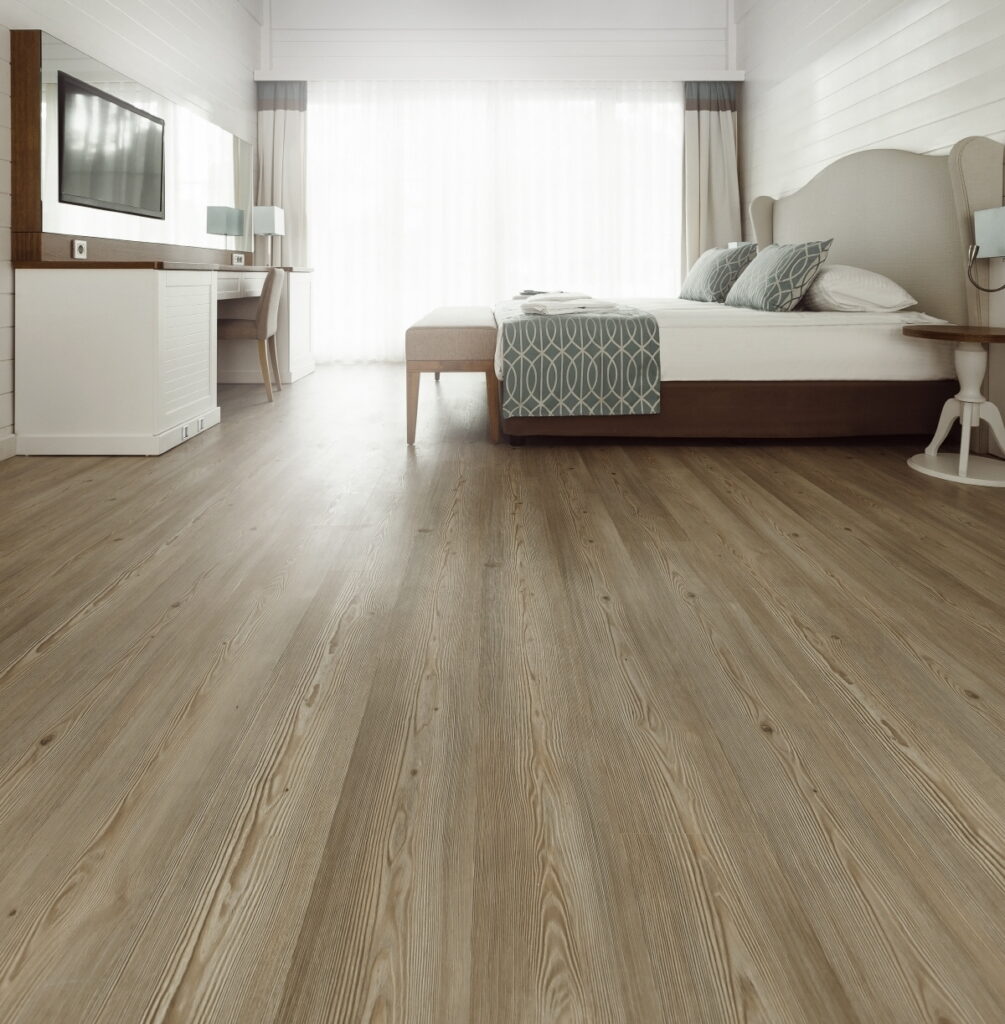
What is the best vinyl flooring thickness?
A typical thickness for vinyl flooring can range between 2mm-8mm+, depending on the type of vinyl you select and where it will be installed in your home. In general, the right vinyl flooring thickness for your space will meet your durability and cost requirements. Thicker wear layers tend to have a higher cost upfront, but will last longer in your space.
Typically, the thinnest vinyl flooring that ranges from 2-4mm is used in lower traffic areas. These could be laundry rooms, bedrooms, storage rooms, or even a less frequented area of the home like a formal dining room. Thinner materials tend to be more affordable, while still retaining many of the benefits of vinyl flooring, such as easy cleaning, maintenance, and installation.
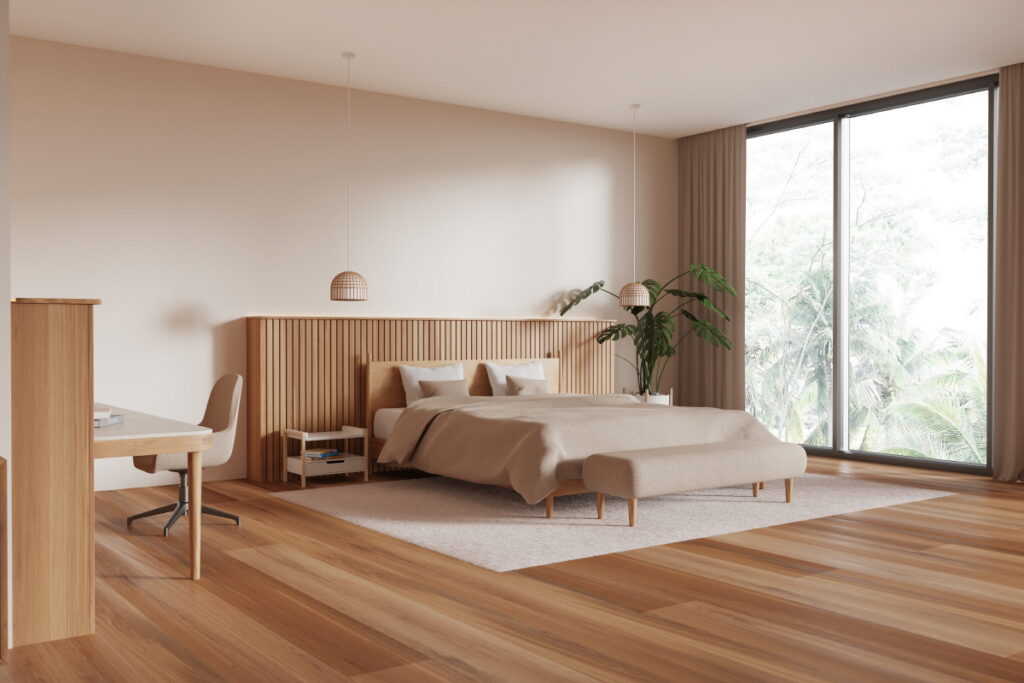
Vinyl thicknesses of 4-6mm are more often used in heavy traffic areas of the home, like kitchens, living rooms, and entryways. These thicker layers offer the benefits of enhanced durability, scratch resistance, and reduced wear and tear over time. Thicker planks also feel softer underfoot and produce greater sound insulation. This is a particular advantage in multi-unit residential buildings. A thicker vinyl can also mask imperfections in your home’s subfloor. In addition, many homeowners who want a unique vinyl plank design select thicker material because it can feature more detailed embossing, like highly realistic wood grain textures.
Finally, thicknesses of 6-8mm are usually used in heavy traffic commercial areas, like restaurants, retail centers, or offices. This highly thick vinyl flooring is used to combat the wear from foot traffic and heavy furniture. Thicker vinyl’s soundproofing capabilities come in handy in commercial spaces where high noise levels can be a concern for the health and productivity of patrons.
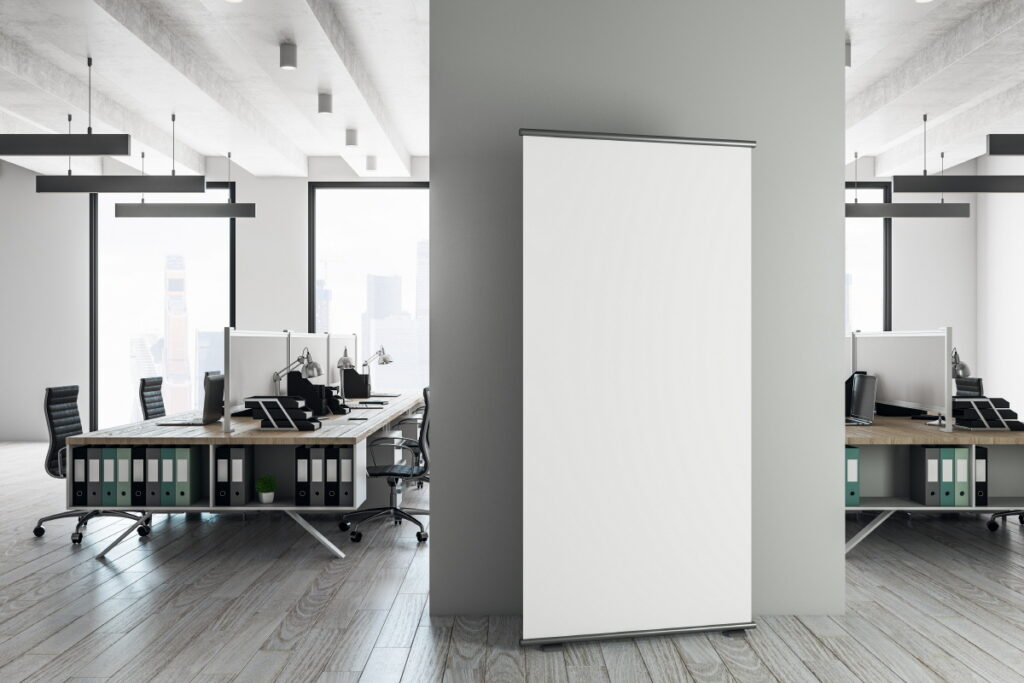
Types of vinyl flooring and thickness
Each type of vinyl flooring on the market provides different levels of thickness, along with durability and affordability. Let’s take a look at three of the most common types of vinyl flooring.
1. Luxury Vinyl Planks
Luxury vinyl planks (LVP) are a common flooring option in homes and commercial spaces. LVP is a synthetic material made of three layers: PVC vinyl, a realistic 3D photo layer, and a durable protective layer. It can replicate the look of any material, including natural woods of all shades and textures. It can even mimic the look of brushed or hand scraped hardwood finishes. It’s often used to create a warm and inviting atmosphere in a space, without the expense or maintenance level of real hardwood.
The thickness of LVP can vary. Thinner LVP (2-4mm) is less durable, meaning it’s more susceptible to scratches and dents. Thicker planks (6-8mm) are more durable and stable.
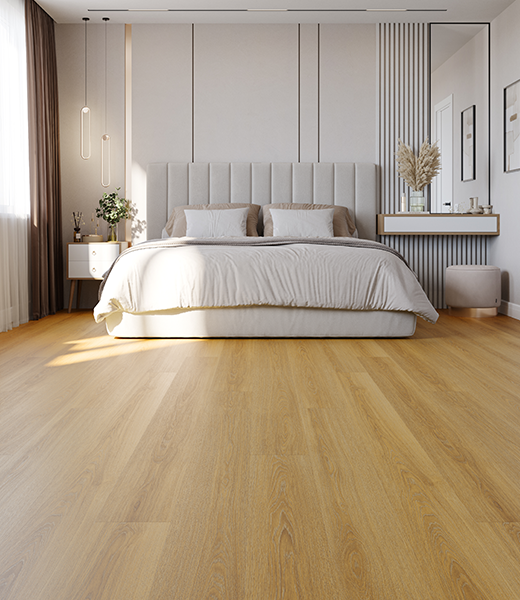
2. Luxury Vinyl Tiles
Like LVPs, luxury vinyl tiles (LVT) are composed of a PVC vinyl layer, a realistic 3D photo layer, and a durable protective layer. Luxury vinyl tiles can be printed to authentically replicate the look of stones, ceramics, and porcelain tiles, and can even incorporate colorful, custom designs that complement your space. LVT is highly water-resistant and low maintenance, making it a favorite for bathrooms and kitchens.
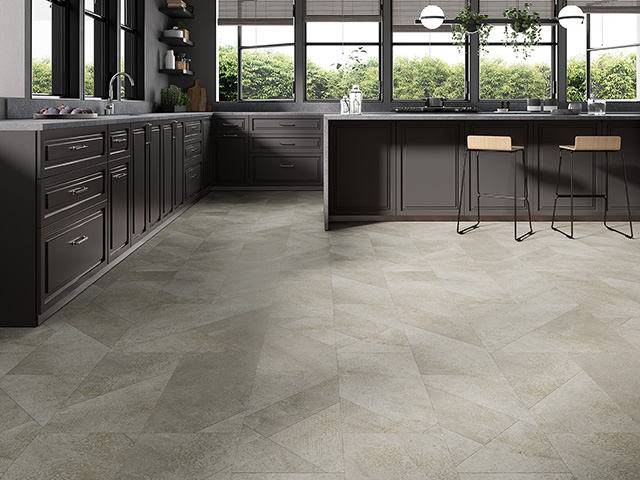
The thickness of LVTs most often range from 1mm-8mm, with thicker tiles offering increased wear resistance. The thinnest type of LVT is peel and stick tiles, which are thin enough to be cut with a knife and adhere to the floor with an adhesive backing layer. Peel and stick tiles often measure between 1mm-1.5mm.
3. Vinyl Sheet
Unlike LVP and LVT, vinyl sheet flooring is produced in large rolls. The sheet itself is made of multiple layers, including a photo image layer and a wear layer. Vinyl sheets can replicate a wide variety of natural materials, including stone, wood, and marble. Because it’s produced in large batches, it’s also easier to create large mosaic designs that are popular in modern, trendy spaces. Vinyl sheet flooring offers increased water resistance and moisture protection compared to LVT and LVP due to its seamless finish. This makes it a popular option for large, high-traffic commercial spaces like offices and schools.
Vinyl sheet flooring tends to be thicker, at 6-8mm, as it’s most often used in heavy-duty applications.
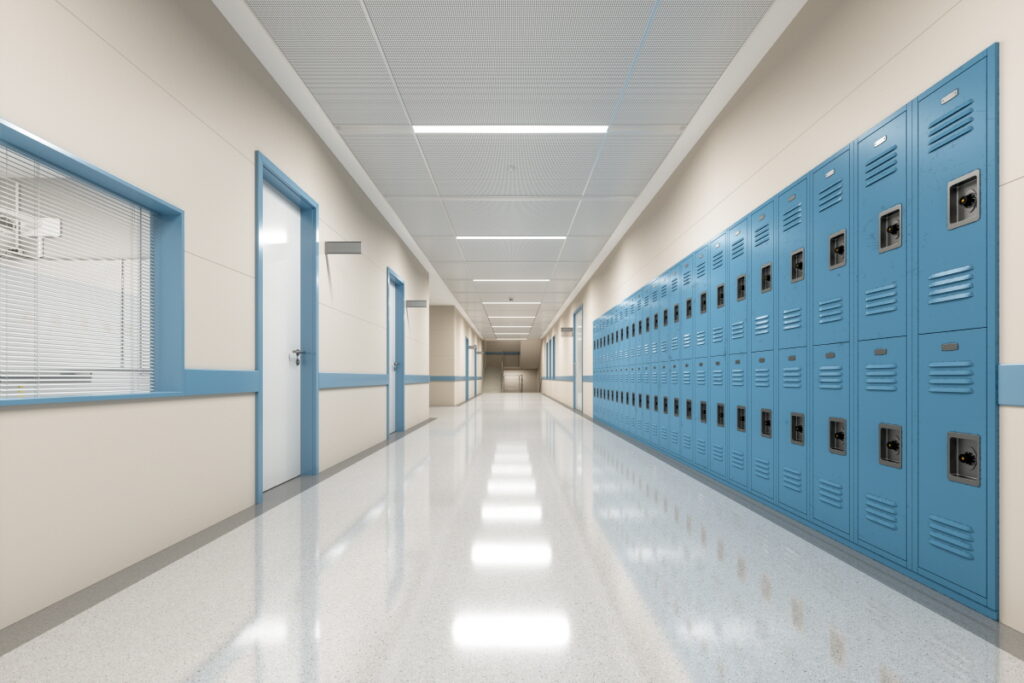
Factors to consider when choosing the thickness
● Wear Layer
The wear layer is the top layer of the vinyl plank, which protects it from wear and tear. It’s often referred to as the “design layer” of the plank. It’s a transparent, protective coating applied on top of the board, or the 3-D photo layer. The wear layer has the greatest impact on the long-term durability of the floor, keeping it safe from stains, scratches, and dents. The thickness of the wear layer ranges from 0.1mm-0.7mm. A thicker wear layer will increase the durability of your floors. However, in areas with lower foot traffic, you can opt for a thinner wear layer and a thicker vinyl layer to improve comfort underfoot.
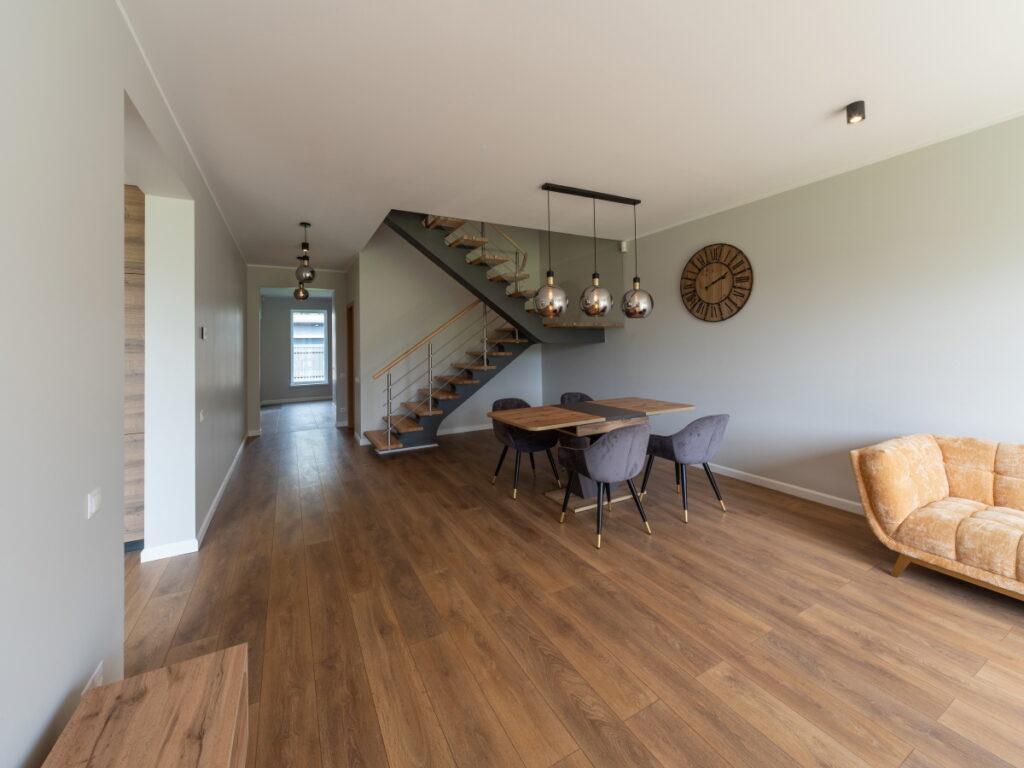
● Subfloor
The subfloor of your home is a key determining factor in how thick your vinyl floor will need to be. A subfloor is the foundation of your flooring. It could be concrete, plywood, or even an existing flooring material. If you have any unevenness in your subfloor, a thicker vinyl plank will help to cover these imperfections without impacting the overall look and feel of your finished floor. However, thinner vinyl planks or tiles may reveal your subfloor’s unevenness. If you do want to use thinner tiles, you may need to perform additional maintenance to even out your subfloor before application.
● Backing Layers
Underneath the protective wear layer and 3-D photo layer, your vinyl flooring has backing layers. These can include the core and the underlayment. The core layer comprises most of the plank’s thickness, and adds both stability and rigidity to your floors. The thicker this layer is, the more stability it provides. The underlayment is an additional layer that can reduce sound transfer and improve comfort when standing. It typically accounts for about 1mm of thickness of the vinyl plank or tile. Thicker backing layers may be needed in applications where you want to match the height of adjacent flooring.
● Protective Coating
A protective coating can be applied to vinyl flooring to add an additional level of protection against wear and tear, without adding significant additional thickness. A protective coating creates low-maintenance and high-luster surfaces that remain durable over time, without the need for waxing. A common protective coating option is polyurethane, which can be applied to your floor using a “roll coating” machine.
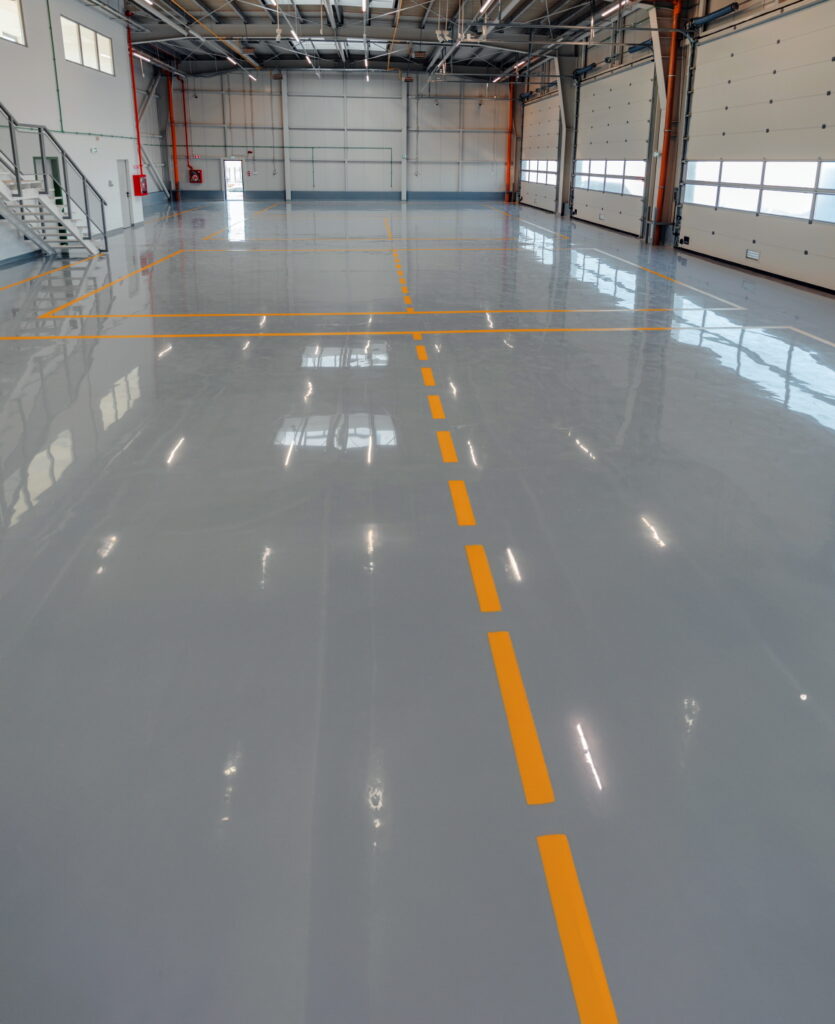
● Foot Traffic
The foot traffic of your space will significantly impact the type and thickness of vinyl flooring that you need. High traffic areas will need a thicker vinyl flooring option to resist wear and tear. For example, heavy furniture in offices and restaurants can damage thinner vinyl flooring. Environments with regular exposure to moisture, like in a school bathroom, can benefit from a thicker vinyl sheet flooring to keep out liquids and protect the subfloor. However, thinner vinyl flooring can be a great option for rooms in residential buildings with low foot traffic where material affordability is a concern.
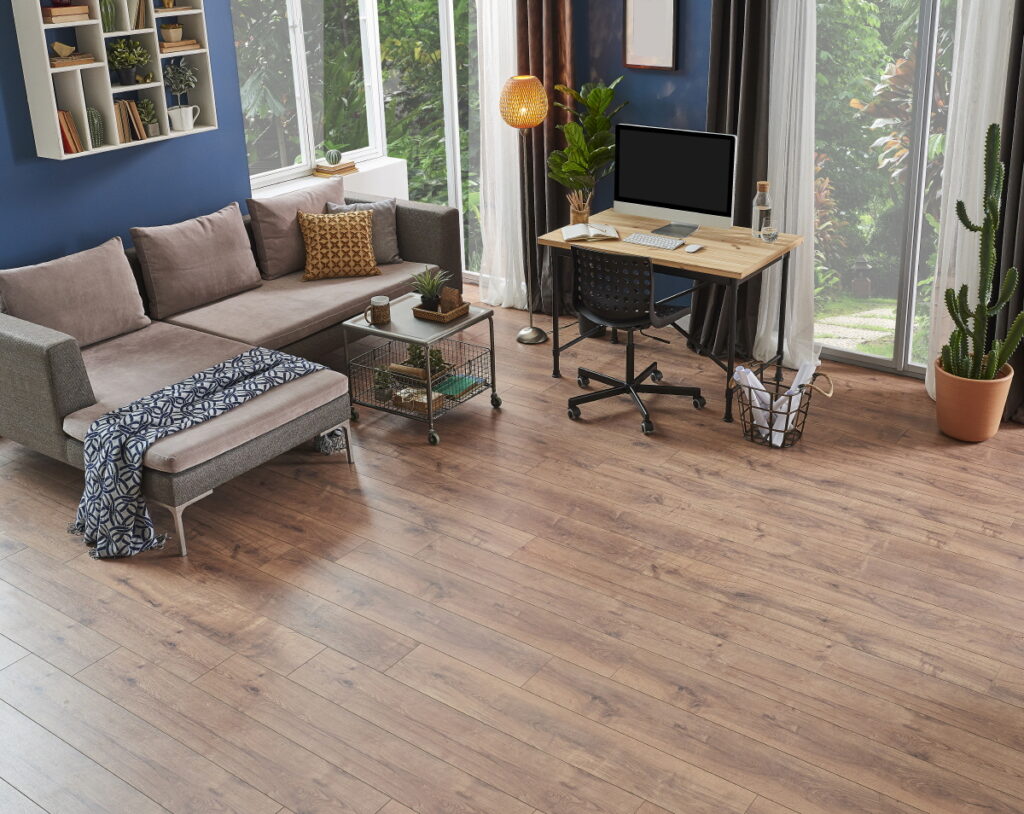
Contact us
Reach out to the LX Hausys team today to connect with an expert on vinyl flooring thickness. We can walk you through the thickness of different types of flooring options, and how the layers of your flooring impact its comfortability, durability, maintenance, and more.

